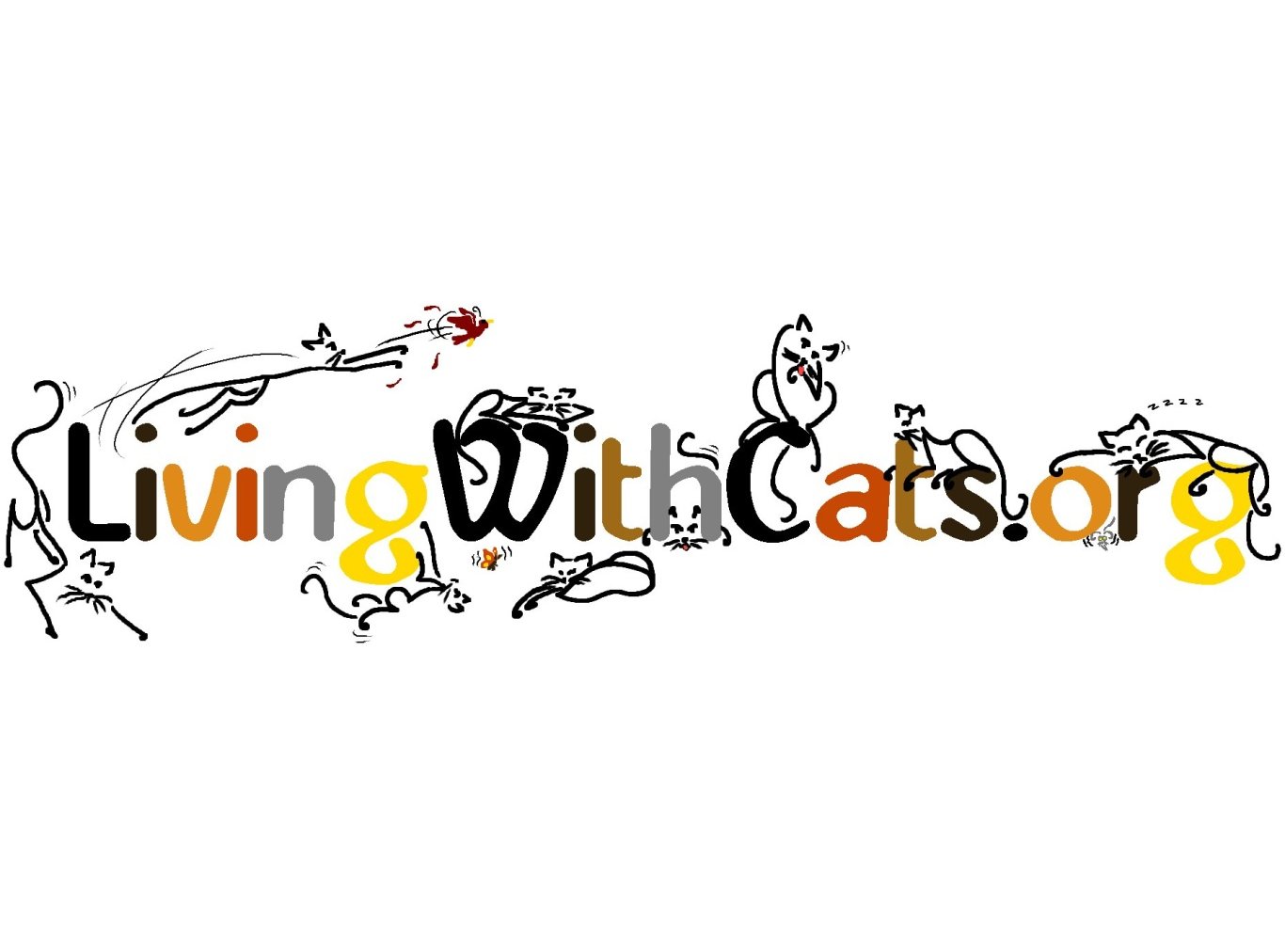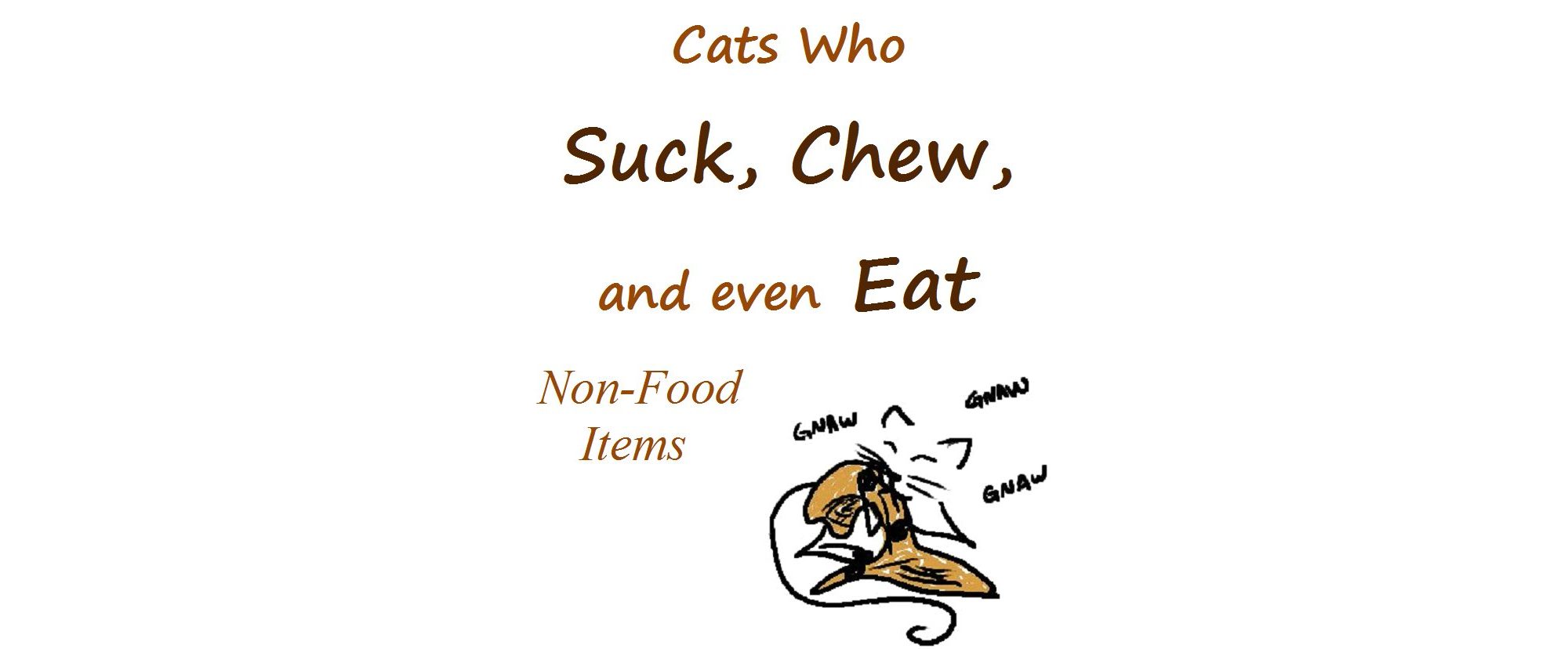Some cats chew on objects to get attention, whereas others just develop a bad habit.
Chewing on items can be very dangerous:
Chewing on electrical and phone cords could cause your cat to be electrocuted.
Chewing on small items–yarn, string, buttons, etc.–that can fit easily in her mouth, or chewing on larger objects from which small pieces can be broken off, could result in those pieces being swallowed, lodging in her intestines and causing an obstruction that will require expensive surgery to fix.
Chewing on plants–some are very poisonous (see our section on Protect Your Cat From Household Dangers).
First off, once you have identified what items your cat likes to chew, remove them from your cat’s reach if possible. This is the simplest solution. She can’t chew an item she can’t get to.
If she is chewing compulsively, try offering her appropriate chew items (like chew sticks for small dogs) and make the items she is inappropriately chewing on taste bad. Bitter Apple or Yuck (or any catrus spray) sprayed on the item will make her dislike it. Most pet stores will carry products that will discourage chewing by making the desired chew item taste bad to your cat.
Toys with or without catnip, cat grass that you can purchase from a pet store and grow in a pot for your cat, and rawhide chews are some appropriate chew items to give to your cat.
For cats who chew on electrical and/or phone cords, simply place these cords inside stiff PVC pipes to hide them. You can also purchase cord covers.
Some chewing of non-food items may be part of normal exploratory behavior. All animals tend to use their mouths in examining unfamiliar items. Sometimes, the item, if small, may even be swallowed. If you discover an occasional tooth mark on furniture, your cat is probably quite normal. Simply leave more interactive toys about your house for her to find. (See Playtime and Toys)
Cats rarely suffer from pica, an eating disorder that is frequently seen in dogs where there is a habitual consumption of indigestible non-food items such as stones, pebbles, nails, etc. Pica is a dangerous and sometimes fatal problem since hard, sharp objects can damage teeth and block or tear the intestines.
Cat eating-related disorders, such as extreme finickiness or fabric chewing or chewing on non-food items are generally not life-threatening.
There are two behaviors, though, that you really need to watch out for. When a cat begins to eat a lot more or, the opposite, dramatically reduces her food consumption, it may be a sign that there is something seriously wrong and your veterinarian needs to be consulted. There could be an underlying medical condition that, if left unattended, could become fatal to your cat.
You need to be concerned about an underlying physical problem if your mature cat suddenly develops a change in her pattern of chewing or eating. Have your veterinarian check her teeth, gums, and throat carefully. Be sure she is able to digest the food that you give her, and that she is not suffering from a form of malnutrition. Some lab work may be necessary. Are you feeding her a 100% balanced and nutritional diet? (See Feeding Your Cat)
If no physical cause is discovered, then behavior modification is indicated.
Eating disorders often reflect an obsessive-compulsive disorder (OCD). The cat is so attracted to certain items that she seems to be obsessed by them. Although wool is most often the fabric of choice, other materials may be chosen by the cat. Perhaps these alternative selections are chosen simply because wool is not available. Then there are some cats who are not at all particular about what they chew or ingest.
It has not been established why some cats simply suck on a fabric, while others will chew, bite off bits and then swallow those bits.
This eating and swallowing non-food items is called “pica”. There are many theories about wool-sucking and fabric ingestion behaviors. Some believe that wool-sucking may be connected to early weaning. Oriental breeds, like the Siamese, suck, chew and ingest fabric more than other breeds of cat, so a genetic predisposition could exist.
Another theory on this behavior is that it could be the result of a low-fiber diet, or caused by the ingestion of processed foods. Some cats do tend to improve when given increased dietary fiber, or are offered safe chewable items such as vegetables or dog bones (the edible kind).
A cat experiencing anxiety may suck or chew on fabric in an attempt to relieve the anxiety.
Your cat may be trying to get your attention. Be careful not to fall into the trap of rewarding her with your full attention when she chews an item. Distract your cat with some favorite toys (or startle her) when you see her chewing. Withhold your attention until she begins to play with her toys. That way you won’t be rewarding chewing.
Offer plenty of opportunities for vigorous mock-hunting, interactive and solo play with safe, appropriate cat toys. Unless your cat is actually consuming large amounts of textile materials (which can cause dangerous blockages and digestive upsets) your best strategy when your cat is eating or chewing on or sucking on something you’d rather she didn’t, is to deny her access to it.
Fabric ingestion cannot be completely cured. Treatment for this behavior may have to become a life-long addition to your daily routine. There is every reason to believe, though, that this behavior can be controlled. There are safe yet bad-tasting products to put on the objects your cat likes to chew. They are available in pet stores and from many veterinarians. If the cat is suffering from anxiety, there are psychotropic medications available through your veterinarian. They need to be used
1-28-2017bct


